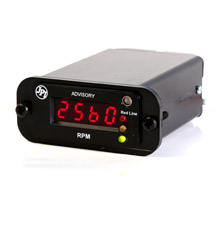 Essentially there are three types of aircraft fuel gauges – mechanical, electrical and digital (latest). Let's take a look on how each of these work. Essentially there are three types of aircraft fuel gauges – mechanical, electrical and digital (latest). Let's take a look on how each of these work.
The mechanical fuel gauge – how it works:
The mechanical fuel gauge used in aircraft uses a cork (currently the float is made from Nitrile rubber) that floats on top of the fuel. So when the fuel level goes up or down so does the cork. The cork in turn is attached at the end of a light-weight pipe usually made from tempered aluminium. As the cork (or rubber float) moves up or down so does the pipe. The pipe in turn is attached to a delicate gear system usually made from stainless steel. Through use of the gear mechanism, the up-down movement of the rod is converted into circular movement which is passed to a rod (or cable) that is attached to the fuel gauge via a drive magnet. So finally, the up-down movement of the float in the fuel tank, is converted into Full – Empty on the fuel gauge. While the mechanical fuel gauge for aircraft might still be used in old aircraft, it is more prevalent in older model cars.
As you can see from description of how the mechanical fuel gauge works, there are too many moving parts and one or the other might get jammed or disconnected due to intense aircraft vibration.
The electrical fuel gauge for aircraft – how it works:
The electrical fuel gauge for aircraft (also known as capacitance meter), does away with the moving parts altogether. Instead, it relies on a capacitor (hence the name) and an electrical amplifier besides of course, a fuel gauge.
Basically, a capacitor stores an electric charge the size of which varies with the dielectric (in this case the dielectric is either the fuel when it is full or air in the tank when it is empty). In very simple terms, as the air-to-fuel ratio changes, so does the capacitance. The capacitance charge is read by the fuel gauge in the cockpit and appropriate fuel information displayed.
Aircraft Gauge for aircraft – how it works:
When any liquid including aviation fuel flows through a pipe, the flow rate can be measured to a high degree of accuracy (even after accounting for changes in density). Typically, once the aircraft is fuelled up, the pilot enters the total quantity of fuel per tank into the digital fuel gauge via the touch-screen keypad.
As the fuel flows through the fuel outlet pipes, the onboard computer keeps track of the fuel flow and deducts this from the respective total for that tank. The onboard computer located within the aircraft electronic management system (EDMS), digitally displays the balance quantity of fuel either in digital figures (depending on the EDMS mode) or, as bar graphs – one for each fuel tank. Because its a computer, the EDMS if coupled with a GPS, can also calculate whether or not the plane has enough fuel to reach its destination. This calculation is based on current fuel consumption and quantum of fuel currently in the fuel tanks. Since everything happens in real time, the information being presented to the pilots is highly accurate. Additionally, the onboard computer can trigger a audio-visual alarm if the fuel level drops below a certain level.
Very high tech Airplane Gauges (either stand-alone types or EDMS types), also have a backup fuel level sensors within each fuel tank. This information too is fed to the onboard computer which in turn determines if there is any variation between the calculated fuel balance and physical fuel balance. Any variation beyond permitted error margin would indicate a fuel leak and trigger an alarm.
|